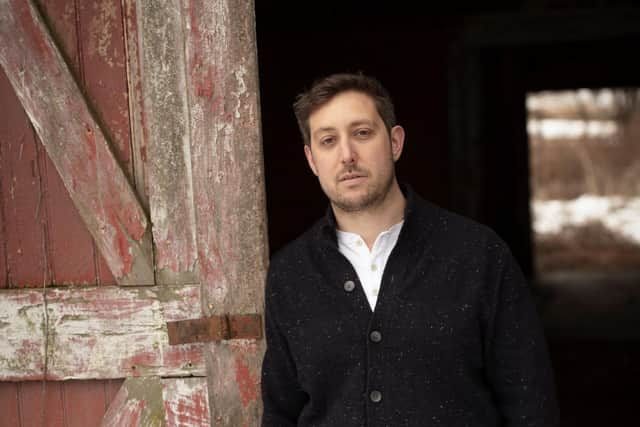Book review: The Dimensions of a Cave, by Greg Jackson
The American Novel does have a weakness for the gargantuan, as if length were synonymous with merit. Many are indeed great novels: Moby-Dick, The Recognitions, Mason & Dixon, Underworld, Infinite Jest. Yes, they are all by men and black polo necks are obligatory. At 464 pages, The Dimensions Of A Cave is less of a behemoth than A Little Life, The Instructions or A Brief History Of Seven Killings; yet it feels longer. The syntax here is claustrophobic, to an extent, I assume, deliberately. So the reader has sentences such as “The world itself, in all its singular vivid nuance, lush and strange, riddled, sovereign, monumental, galvanized with storms, sunsets, liquid blazes, vistas, held an unencompassable richness, that only by staying still, at a fixed point, to think and dream and project outward with imagination’s imperial claws, bound in the soft blinkering fleece of abstraction, did you begin to feel master over or superior to, aware of in its entirety”. I was certainly intrigued and interested, but I fear this may be a somewhat niche novel.
The plot involves four friends, all male journalists, who decamp for a long weekend together. Three have undemanding jobs in a straitened industry; one, Quentin, has kept the flame of earlier ambition. “We may have seen ourselves as the descendants of noir detectives – proud, pathetic disheveled men, as prickly and sardonic on the outside as we were hopeless Manichaeans within… and we believed, with fervor that flirted with the religious, that a single, knowable reality existed and that it was every last person’s right to know what this reality was”. Over the course of their long weekend, Quentin, will cast doubt on this credo.
Advertisement
Hide AdHis “friends” are ciphers, a kind of Greek chorus or jury to Quentin’s story, infrequently braided in as “we” to provide background, as in “A word on Quentin’s early days. We each knew part of the story, and together this assembled a significant portrait, although naturally there are countless ways one can narrate a life”. Quentin has remained at the coalface of exposing corporate and political corruption. In this, he is abetted by his even more zealous, uncompromising protégé, Bruce. Bruce has taken on a commission reporting on foreign affairs, in a war-zone where America has both a military presence and a network of consultants, agencies, freelancers and private security firms on lucrative contracts. He has then disappeared.


Bruce and Quentin were working on a top-secret black ops project codenamed SCIMITAR. The story was spiked. But is seems as if the project then metastasised into the equally arcane VIRTUE. Basically, it’s a way to interrogate captives in a virtual reality, not necessarily with virtual pain, but by an experience so immersive that the subject gives themselves away. Is it legal? Is it moral? Is it possible? This is the territory of film, particularly the work of Christopher Nolan, the Matrix films, The Truman Show and the underrated Dark City. That last film especially should come to mind due to its allusion to the fable of the cave in Plato’s Republic, for what is cinema but a darkened room with images flickering against the wall that we are encouraged to mistake for reality?
If you are going to embark on this journey I would advise a crash course in continental theory (top of your reading list: Jean Baudrillard). Large sections are interrogations of what selfhood, consciousness and reality are, especially in a world infested by relentless images and fake news. There is, in a small moment of levity, a caricature of an provocative arch-sceptic philosopher who seems as much Slavoj Zizek as Socrates. Jackson, in his own words, nails the moral question about simulations and the actuality or not of other minds: “‘What does a crime become – rape, torture, death – when it’s a purely psychic, disembodied experience? What can the human mind withstand when the body is kept right and hale? These are crimes we don’t even have words for yet. Crimes of the psyche, the spirit. That’s what we don’t know.’ ‘And the soul?’ I said. Rich smiled and drank what was left of his beer. ‘Now you’re getting it.’”
The jacket compares this novel to Conrad’s (much shorter) Heart Of Darkness, with Bruce as a digital Kurtz and Quentin as a reluctant Marlow. That reference to Manichaeans was an early clue in this hall of mirrors. Bruce delivers a 30-page oration on the prominent genocides, massacres and holocausts of history. It has the same numbing effect as the fourth part of Bolano’s 2666. The question remains: can anything we make not partake of our crookedness? Yet there are glimmers in strange places, including a serious revelation about guilt and atonement (the religious itch is difficult to scratch effectively). If the creations are as real as us, who will protect them, love them, give them dignity? Whose foot will the sandal fit?
As I said, it is a fascinating set of speculations, even if overlong and overwrought. If you want the political nefariousness without the metaphysics, Ricahrd House’s The Kills covers the same.
The Dimensions of a Cave, by Greg Jackson, Granta, £18.99